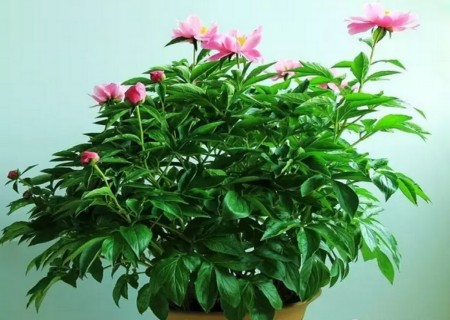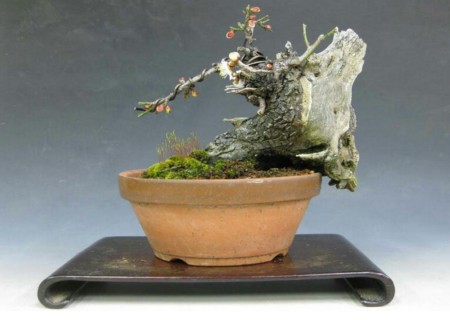Planting methods and matters needing attention of potted jasmine
"what a beautiful jasmine, fragrant and beautiful all over the branches, fragrant and white." this song praising jasmine is a Korean folk song, which is popular all over the country, making many friends in awe of the light and elegant jasmine. Jasmine is a common aromatic potted plant, which is often planted in living room and courtyard.
Jasmine is a widely used and popular flower, and most residents like to plant bonsai. The flower has a strong fragrance, the florescence is as long as 6 months, and the flower can also extract essence, which is one of the important raw materials for extracting spices and scenting scented tea. The following is to introduce the planting methods and matters needing attention of potted jasmine.
1. Prepare soil
Jasmine pot culture requires that the cultivated soil is rich in organic matter, and has good water permeability and aeration properties. Generally, 4 parts of pastoral soil, 4 parts of compost, 2 parts of river sand or grain bran ash, plus an appropriate amount of fully rotten dried cake, chicken and duck manure, and sift out the powder and coarse grains, cover the bottom with coarse grains.
2. Cuttage propagation
The propagation of jasmine is simple, and the cutting propagation is easy to succeed. The most readily available material for cutting substrate-clean sand, take advantage of the high temperature and humidity in the rainy season (the plum rain season in June and July in Jianghuai and some areas in the south of the Yangtze River), cut off the semi-tender branches (semi-Lignification) with two leaves and insert them in the sand with a sand depth of 8 cm to 12 cm and a branch length of 10 cm. It is appropriate to insert 3 cm to 4 cm, pour water thoroughly, and connect water and sprinklers if possible. Spray under the sun (full light spray). If there are no conditions, you can spray water to the leaf surface with a small sprayer, which can take root and survive in about 20 days.
3. Put it on the basin correctly
After rooting, it should be put on the pot in time, so that it can get nutrition as soon as possible and promote growth and enhance resistance. Potted soil is one of the keys to good cultivation, which requires looseness, fertility and acidity. It is not easy for residents to get soil, but to raise jasmine, you can use rotten leaf soil, pine needle soil or moss soil that has been accumulated for many years at the foot of the mountain, mound and green island. The pot is better with tile bowl or purple sand basin. Although the plastic basin is good-looking, it is not suitable for use because of its poor permeability. No matter what utensils are used to ensure that there are holes in the bottom to achieve the purpose of water and air permeability, but do not leak soil, generally covered with broken tiles or brown silk, gauze and so on.
4. Appropriate watering
Immediately after planting, pour through the root water. When planting new shoots, we should pay attention to timely irrigation, basin soil is not dry, no watering, no water in the basin when watering. In the flower-picking season, too much water will lead to rotten roots and yellow leaves; drought will lead to wilting leaves and dry flowers, so special attention should be paid to drainage and irrigation.
5. Proper fertilization
Jasmine likes fertilizer, but fertilizing should be carried out according to its growth law, generally watering in the morning, fertilizing in the evening, dissolving water the next day, slightly loosening the basin soil with a small shovel before watering, and not watering when the basin soil is too dry or too wet, the effect of fertilization is the best when it seems to be dry or too wet.
6. Timely pruning
Jasmine is the most prosperous in 3-6-year-old seedlings, and then it is senescent year by year, so it needs to be cut and renewed in time. Before the Spring Festival sprouting, last year's branches can be properly cut short, keeping the base 10-15 cm, so that a large number of sturdy new branches occur. If the new branches grow very vigorously, they should pick the heart when growing up to 10 cm, promote secondary shoots, and blossom more, and the wipe type is compact. High ornamental value. Note: pruning should be carried out on a sunny day, combined with leaf thinning, diseased branches can be removed, and the plant can be adjusted, which is beneficial to growth and budding and flowering.
7. Techniques for changing pots
Potted jasmine flowers should generally be changed once a year. When changing the basin, part of the old soil and residual roots around the jasmine root system were removed and replaced with a new culture soil to improve the soil aggregate structure and nutrients, which was beneficial to the growth of Riley. When you change the basin, water it thoroughly as if it were on the basin, so that the root soil can be connected closely and the growth can be restored.
Note:
1. Jasmine is not tolerant to drought, but avoid stagnant water. In rainy season, it is necessary to dump stagnant water in the basin in time, otherwise the leaves are easy to turn yellow. In summer, hot and sunny days should be watered twice a day, once in the morning and evening, if you find that the leaves curl and droop should spray water on the leaves to promote growth.
2. The pruning of jasmine flowers is very important in summer, except for cutting off the weak branches after overwintering in spring, leaving only the stout base for new buds to sprout. After the flower fails, the branches should leave 3-5 nodes in time and cut off the top tip to promote the germination of new Asia and ensure the blooming of flowers.
3. Jasmine often has luxuriant branches and leaves but does not blossom in summer. The main reason is that too much nitrogen fertilizer is applied, resulting in the growth of branches and leaves. In such a situation, it is necessary to control fertilizer and water, increase the application of phosphorus and potassium fertilizer, and promote the gestation of flower buds. At the same time, we should pay attention to move the jasmine to a place with sufficient sunshine and good ventilation.
4. Jasmine is afraid of the cold. Potted jasmine in the south can be cultivated outdoors to survive the winter. In the north, it is necessary to keep warm in autumn and winter, and move indoors and put it toward the south. If the light is strong, the branches are strong, the leaves are dark green, the flowers are many and fragrant, and if the sun is not enough, the flowers are sparse and not fragrant.
Time: 2019-05-24 Click:
- Prev

Potted planting method of Paeonia lactiflora
Peony is known as flower immortal and flower appearance, and is listed as one of the six famous flowers, also known as Mayflower God, because it has been regarded as the flower of love since ancient times, and now it has been respected as the representative flower of Qixi Festival. Paeonia lactiflora is not only a precious flower, but also its root is an effective traditional Chinese medicine. Peony flowers can not only be planted on the ground, but also potted and domesticated to decorate the balcony.
- Next

Cultivation techniques of Plum Blossom Bonsai
Plum and pine and bamboo are also called old and cold friends, and their flowers are simple and elegant; their branches are mottled and old, and they are not easy to rot, so they are one of the few tree species that can be used as shellfish and sacred branches in bonsai materials. It has high appreciation and collection value, so it is sought after by bonsai teachers.
Related
- Fuxing push coffee new agricultural production and marketing class: lack of small-scale processing plants
- Jujube rice field leisure farm deep ploughing Yilan for five years to create a space for organic food and play
- Nongyu Farm-A trial of organic papaya for brave women with advanced technology
- Four points for attention in the prevention and control of diseases and insect pests of edible fungi
- How to add nutrient solution to Edible Fungi
- Is there any good way to control edible fungus mites?
- Open Inoculation Technology of Edible Fungi
- Is there any clever way to use fertilizer for edible fungus in winter?
- What agents are used to kill the pathogens of edible fungi in the mushroom shed?
- Rapid drying of Edible Fungi

